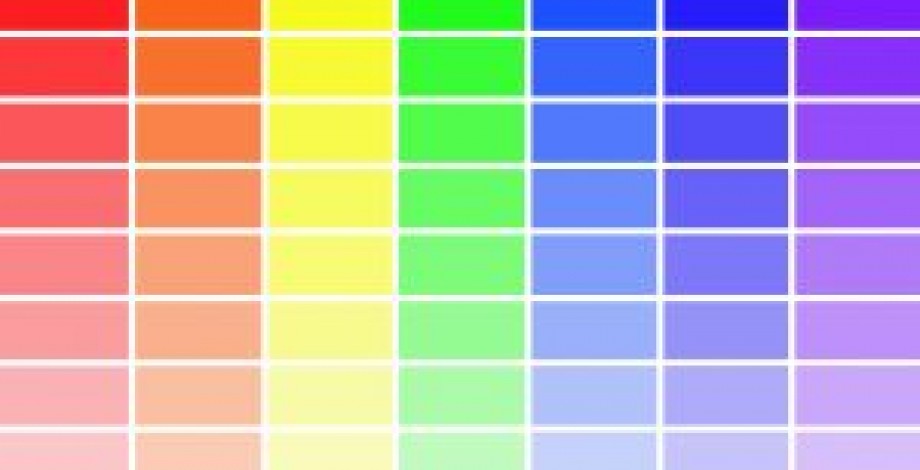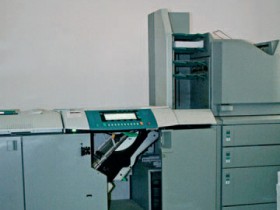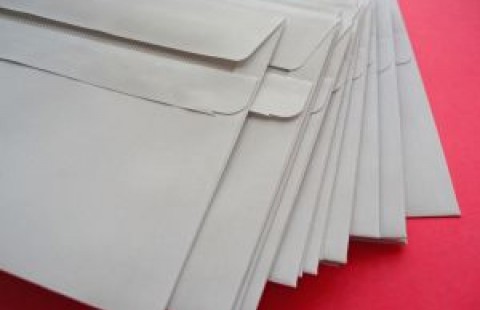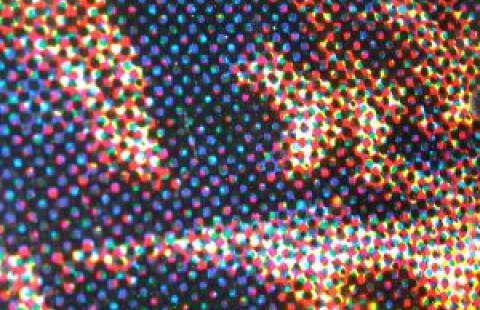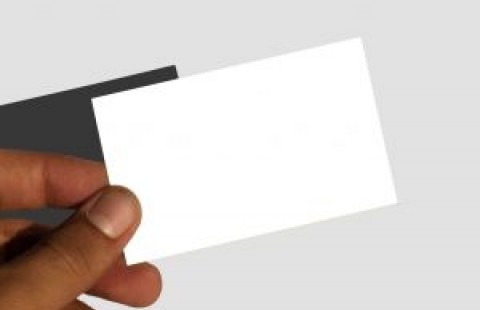Digital printing(low-edition printing) has increasingly been used in practice. It is especially suitable for smaller number of copies, and has the advantages of a high printing speed and the optimal price/copy ratio. Digital printers start where your office printer ends, as offset printing is too costly.
Today, digital printing has increasingly been used for small series (the so-called low-edition printing). Printers range from simple printers and copiers up to professional printing machines worth many millions of crowns. These machines utilize the CMYK color environment. The printing ink used is mostly powder (toner), yet there are exceptions. In order to prepare them for running, you do not need any prepress editing, nor do you need printing plates (metal masters), neither any prestart preparation. Compared with offset printing, digital printing is, in itself, more expensive. This is why it is not appropriate to use this technology for mass-printed leaflets, for example. By contrast, digital printing of lower-edition materials, and also materials whose contents vary with each print-out, will pay off. This digital technology makes it possible, among other things, to print books with inscriptions or annual reports intended straight for a specific user.
Even though digital printing is recommended for lower editions, it is more and more often used in mass-printing of personalized letters or products´ manuals. For, in doing so, an annual saving worth hundreds of thousands, if not millions, of crowns can be realized, provided that only those parts of manuals that their users can really use are printed. German-speaking users, for instance, are not interested in an instruction printed in Turkish or Italian, and if ways of distribution on these disparate markets can be fixed in terms of the logistics, the aforementioned savings can be achieved very quickly.
The quality of printing, selection and format of printed materials, the price as conditioned by the number of copies - these are all criteria we are going to consider while choosing a particular technology to meet individual company needs.
The quality of printing
Generally, as compared with the offset technology, digital printing´s quality is lower. In recent years, however, this technology has made enormous advancement, so most printed materials can comfortably suit their purposes – the quality does not act as an interfering element here any longer. In classical books, for example, a regular user is unable to distinguish whether a book has been printed with digital or offset technology. On the other hand, printing a memorial volume of photographs on glossy paper for exhibition purposes is certainly not a job suitable for a digital printer.
Selection of materials for printing
The choice of decoration printing materials is limited to materials that suit the digital printing technology. Unlike the offset, here the fixing of ink to the base is done by means of the joint effect of temperature and pressure. The temperature inside the fixing unit ranges around 200 ˚C, a temperature at which certain paper component parts with a potentially harmful effect on the printing machine are released. Most frequently they are free ketones - waxes. Nevertheless, thanks to a growing demand for these products, the choice of suitable materials has been expanding very fast.
Format of printed materials
The printing sheet here is smaller than the offset one, mostly it is an A3++ (305×457 mm, resp. 320×450 mm) format paper. The format is limited due to technological reasons, viewing the limitations imposed by the need to maintain the color register. With regard to the fact that an absolute majority of materials are in formats smaller than A3, the printing format is not so constraining here.
The positive aspects of digital printing:
- number of copies up to 1.000 pieces
- ideal for small series of posters, leaflets, ....
- personalized printing
- business cards
- easy preparation
- easy repeatability
- printing from Word, Excel, PowerPoint and other SW
- high print speed
- lower cost of finishing work, collation, etc.
The negative aspects of digital printing:
- the price is only economical for higher numbers of copies, compared with the offset technology
- smaller choice of materials suitable for printing on
- the quality of the digital sheet printing, as a rule, does not enable to print artwork reproductions
- it is impossible to use the Panthone colors

